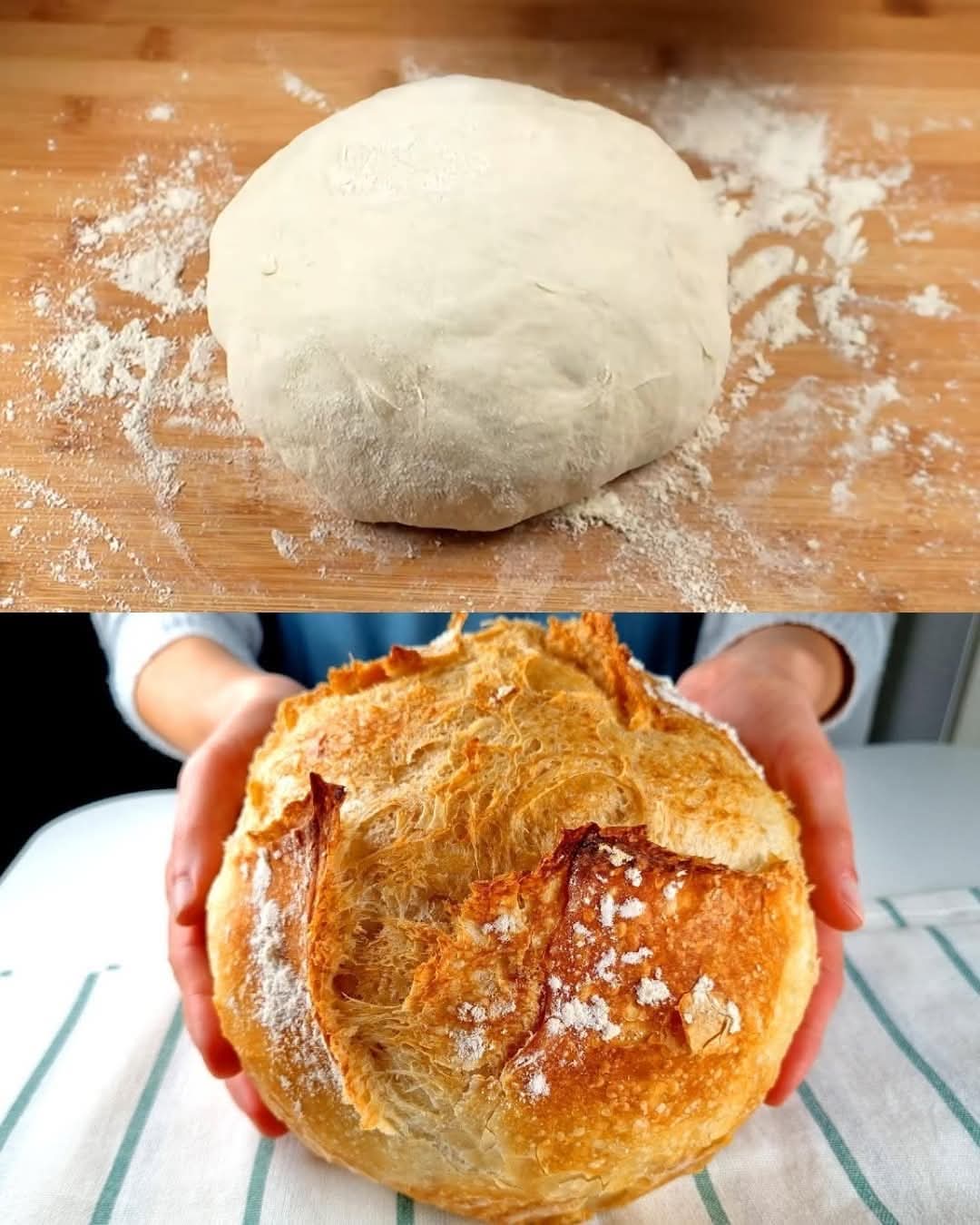Perfect 🙌 You want a long, SEO-friendly recipe post for your No-Knead Homemade Bread with Biga Starter. I’ll write it like a blog article with detailed instructions, tips, and keyword-rich content so it can rank well.
🍞 No-Knead Homemade Bread with Biga Starter – Rustic, Flavorful, and Easy
There’s nothing quite like the smell of freshly baked bread filling your kitchen. But if you’ve ever thought baking bread was too time-consuming or complicated, this recipe will change your mind. With the help of a biga starter, you can make a beautiful, artisan-style loaf at home—without kneading!
A biga is a traditional Italian pre-ferment that gives bread its wonderful chewy texture, deep flavor, and lovely airy crumb. By preparing the biga a day ahead, you allow the natural fermentation to develop complex flavors, much like sourdough but with less effort. The result? A rustic, bakery-style loaf with a crisp crust and soft interior—perfect for soups, sandwiches, or simply enjoying with butter.
⭐ Why You’ll Love This Recipe
- No kneading required → just mix, rest, and bake.
- Biga starter adds depth → more flavor, better texture, and longer freshness.
- Minimal ingredients → just flour, water, salt, and the biga.
- Beginner-friendly → no fancy equipment needed.
- Versatile → enjoy it with pasta, salads, or as toast for breakfast.
🥖 What is Biga?
Biga is a type of Italian pre-ferment made with flour, water, and a small amount of yeast. It’s prepared the day before and left to ferment overnight. This process strengthens the dough, improves gluten structure, and enhances flavor. Unlike quick breads, bread made with biga has a more complex, slightly nutty taste and a delightful chewy texture.
🥘 Ingredients
For the Biga (prepare 12–16 hours before baking):
- 1 cup (130 g) bread flour
- ½ cup (120 ml) water
- ¼ tsp instant yeast
For the Bread Dough:
- 2 ½ cups (320 g) bread flour
- 1 cup (250 ml) water
- 2 tsp salt
- 1 batch of biga (from above)
👩🍳 Instructions
1. Prepare the Biga
- In a bowl, mix together flour, water, and yeast until a shaggy dough forms.
- Cover with plastic wrap or a damp towel and let it sit at room temperature for 12–16 hours.
- By the next day, the biga should be bubbly, fragrant, and slightly domed.
2. Make the Dough
- In a large bowl, combine the biga, flour, water, and salt.
- Mix with a wooden spoon or spatula until a sticky dough forms. (Don’t worry—it should look rough and shaggy.)
- Cover the bowl and let the dough rest at room temperature for 2–3 hours, folding the dough over itself every 30 minutes to build structure.
3. First Rise
- After the resting period, cover tightly and let the dough rise until doubled in size (about 2 hours).
- The dough will look airy and soft.
4. Shape the Loaf
- Turn the dough out onto a floured surface.
- Gently shape it into a ball or oval, being careful not to deflate too much air.
- Place the dough onto parchment paper and let it rise for another 30–45 minutes while you preheat the oven.
5. Bake the Bread
- Preheat your oven to 475°F (245°C) with a Dutch oven inside.
- Once hot, carefully place the dough (on parchment) into the Dutch oven.
- Cover and bake for 30 minutes.
- Remove the lid and bake another 15–20 minutes until golden brown and crisp.
- Cool on a wire rack before slicing.
🍴 Serving Ideas
- Pair with a warm bowl of tomato soup or hearty stew.
- Slice for sandwiches or use for bruschetta.
- Serve alongside cheese, olives, and cured meats for an Italian-style platter.
- Toast with butter and honey for a comforting breakfast.
💡 Tips & Variations
- Hydration matters → if the dough feels too dry, add a little extra water.
- Flavor boost → add rosemary, thyme, or roasted garlic to the dough.
- Crispier crust → place a small pan of water in the oven for steam while baking.
- Storage → wrap in a kitchen towel and store at room temperature for up to 3 days, or freeze slices for up to 2 months.
✅ Final Thoughts
This No-Knead Homemade Bread with Biga Starter is the perfect balance of simplicity and sophistication. With just a little planning ahead, you can achieve bakery-quality results right in your own kitchen. The biga starter develops flavor and texture that store-bought bread simply can’t match.
Once you bake this loaf, you’ll see why Italian bakers have used biga for centuries—it makes bread that is truly unforgettable. 🍞✨
Would you like me to also add a short story intro (like “I first discovered biga while learning Italian baking traditions…”) to make it even more engaging for SEO blogs, or keep it straightforward and professional?
